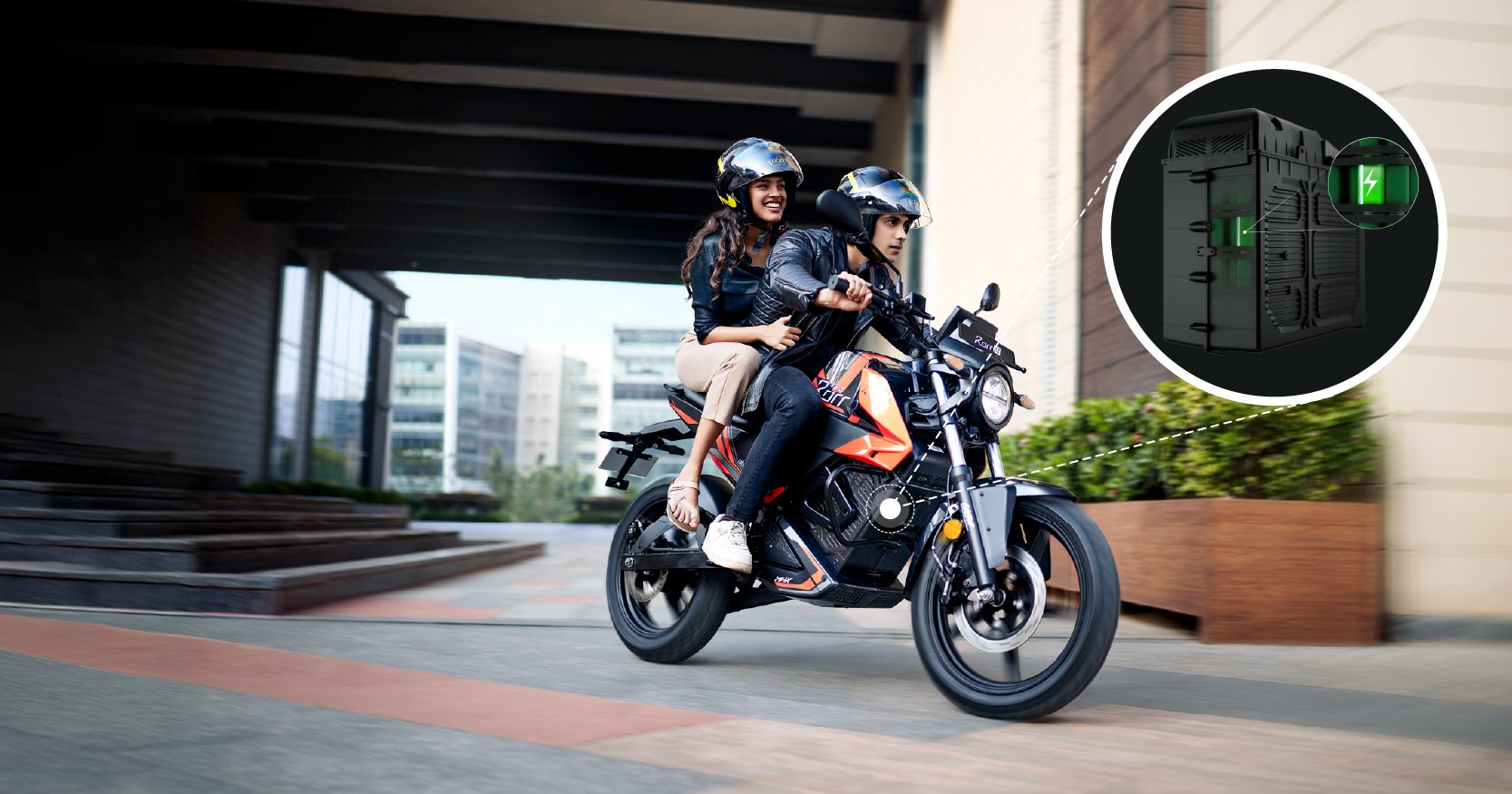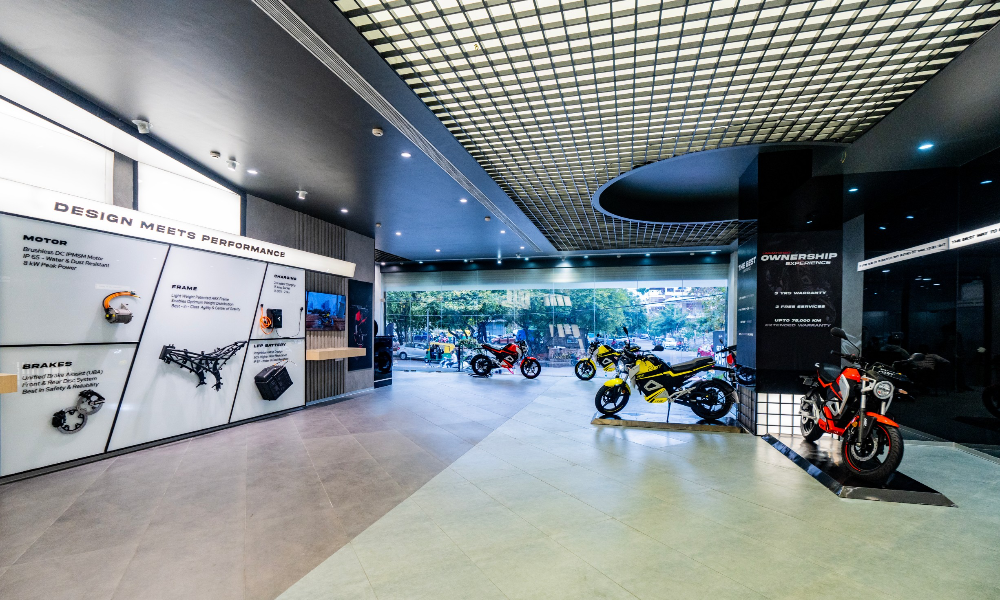- ALL
- TRENDING
- PERFORMANCE
- CHARGING
- BATTERY
- DESIGN
- TECH
- NEWS
Why Oben Electric Uses LFP Batteries in its Bikes?

Table of Contents
What is an LFP Battery?
Benefits of Using LFP Battery in Oben Electric Bikes
Why Oben Electric Uses LFP Batteries?
Oben Rorr EZ & Rorr EZ Sigma: India’s True LFP Battery Bikes
LFP Battery vs Other Battery Types
Real-World Advantage: Built for Indian Conditions
The Future Belongs to LFP Battery Bikes
In 2025, electric two-wheeler sales in India recorded a strong 21% year-on-year increase, reaching nearly 1.15 million units. They also accounted for around 58% of total EV sales in the country, highlighting the continued consumer shift towards cleaner and more sustainable mobility.
At the heart of every high-performing electric bike lies its battery technology, the ultimate driver of its range and lifespan. Among emerging innovations, Lithium-Ferro Phosphate (LFP) batteries, which are used in Oben Electric bikes are rapidly gaining ground due to their safety and performance. Unlike traditional lithium-ion batteries, LFP batteries offer higher thermal and chemical stability, significantly reducing the risk of overheating or fire. Their cost efficiency further makes them a dependable choice for both manufacturers and riders in India’s evolving EV landscape.
Among the few brands pioneering this shift in India is Oben Electric. With high-performance LFP battery bikes in India, Oben Electric is engineering bikes specifically for India’s challenging road and weather conditions.
What is an LFP Battery?
An LFP battery is a type of lithium-ion battery wherein the cathode is made up of lithium iron phosphate as opposed to expensive and harmful materials like nickel and cobalt found in traditional lithium-ion batteries. This makes LFP a cleaner and safer electric bike battery alternative.
Oben Electric uses LFP batteries in it's electric bikes due to their unique blend of safety, longevity, and cost-effectiveness. LFP battery combined with our proprietary MHX Technology, significantly reduces the risk of overheating and potentially catching fire. This inherent safety makes it particularly attractive for use in Oben Electric bikes.
Benefits of Using LFP Battery in Oben Electric Bikes
1. Environmental and Economic Benefits
LFP batteries use iron and phosphate, materials that are more abundant and cheaper than nickel and cobalt. For both manufacturers and consumers, this directly translates into lower costs. They also deliver a longer cycle life, resulting in fewer replacements over time and less battery waste.
2. Durable Performance
In terms of performance, LFP batteries have a slightly lower energy density than NMC batteries, which means they can store less energy per unit of weight. However, this is offset by their ability to sustain more charging cycles, which enhances their lifespan. LFP batteries can typically handle more charge cycles before their capacity degrades significantly, which makes them highly durable.
3. Unmatched Safety
Known for their superior thermal stability, LFP batteries in Oben Electric bikes can withstand high temperatures and stress without overheating or catching fire. This lower risk profile makes them particularly suitable for daily commuting, even in India’s demanding weather conditions. Additionally, LFP batteries are inherently stable and can withstand extreme conditions, including high temperatures or physical damage. Unlike many other battery types, LFP batteries are less likely to fail catastrophically in challenging circumstances or terrain.
Why Oben Electric Uses LFP Batteries?
Oben Electric is among the pioneers in manufacturing LFP battery bikes in India, having chosen this tech owing to the inherent consistency, safety, and performance. Every aspect of Oben Electric’s battery technology embodies its philosophy, “Made for India for the World”, built to endure the country’s diverse roads and daily riding conditions.
Here is how this innovation delivers on the road:
1. Longer Battery Life: Lithium-Ferro Phosphate battery bikes feature up to twice the lifespan of conventional lithium-ion batteries, giving riders more years of dependable performance.
2. Fast Charging Time: With Oben Plug, riders can charge their Oben Electric bikes from 0-80% in just 2 hours, making daily commutes effortless and downtime minimal.
3. Enhanced Safety: The battery pack is housed in an IP67-rated aluminium casing, offering complete protection against dust and water.
4. MHX (Maximum Heat Exchange) Technology: Oben’s proprietary MHX Technology enables 50% higher heat resistance, which allows for performance even in India’s harshest summers.
5. Efficient Power Delivery: Delivers smooth, consistent performance from 0 to top speed, with no lag or loss in acceleration.
Oben Rorr EZ & Rorr EZ Sigma: India’s True LFP Battery Bikes
Oben Electric’s Rorr, Rorr EZ and Rorr EZ Sigma are powered by advanced LFP batteries, combining everyday commuting efficiency with performance.
The Rorr EZ Sigma is available in two battery variants - 3.4 kWh and 4.4 kWh, while the Rorr EZ comes in three battery variants - 2.6 kWh, 3.4 kWh, and 4.4 kWh, catering to different riding needs and range preferences.
LFP Battery vs Other Battery Types
Real-World Advantage: Built for Indian Conditions
Riding on Indian roads can be challenging - from scorching summers, when temperatures can go as high as 45°C, to sudden downpours and endless traffic snarls.
In such demanding conditions, Oben Electric’s battery technology, made for and tested in India, proves its mettle. With exceptional thermal stability and resistance to degradation, Oben Electric’s bikes ensure consistent performance.
Additionally, Oben Electric’s IP67-rated battery design shields against dust and water, guaranteeing smooth rides through monsoons and uneven terrains. Complementing this is the ARX frame, engineered for rock-solid stability and control that gives riders complete confidence on every journey.
The Future Belongs to LFP Battery Bikes
As technology evolves, LFP batteries are only getting better — holding more energy and lasting longer. With an India-focused engineering philosophy, Oben Electric’s LFP battery bikes are a benchmark for safety, durability, and performance. Prioritising what matters most to Indian riders, Oben Electric has designed a reliable and powerful riding experience built for Indian roads.
Also Read:
1. Electric Bike Battery Types Explained: Which One Powers Oben Electric Bikes?
2. Electric Bike Subsidy in India - How much can you save Oben Electric Bikes?
3. How Much Your Daily Commute Actually Costs (Petrol vs Electric Bike)




